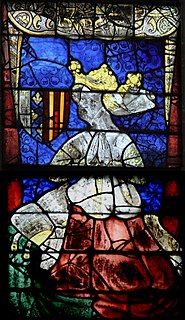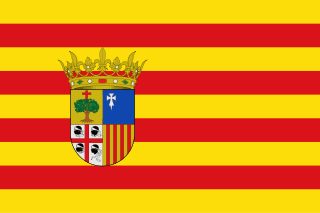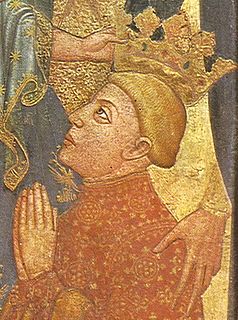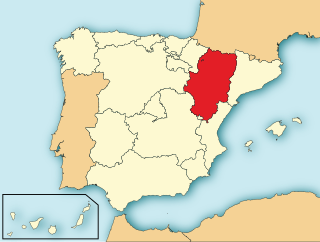
René of Anjou, also known as René I of Naples and Good King René, was count of Piedmont, Duke of Bar (1430–80), Duke of Lorraine (1431–53), Duke of Anjou, Count of Provence (1434–80), briefly King of Naples, titular King of Jerusalem (1438–80) and Aragon including Sicily, Majorca and Corsica (1466–70).
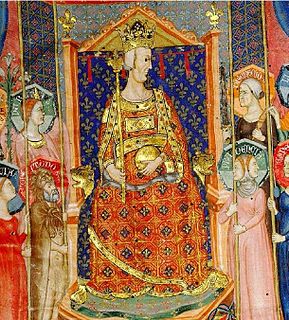
Robert of Anjou, known as Robert the Wise, was King of Naples, titular King of Jerusalem and Count of Provence and Forcalquier from 1309 to 1343, the central figure of Italian politics of his time. He was the third son of King Charles II of Naples and Maria of Hungary, and during his father's lifetime he was styled Duke of Calabria (1296–1309).

Isabella was suo jure Duchess of Lorraine, from 25 January 1431 to her death in 1453. She was also Queen of Naples by marriage to René of Anjou. Isabella ruled the Kingdom of Naples and her husband's domains in France as regent during his imprisonment in Burgundy in 1435-1438.
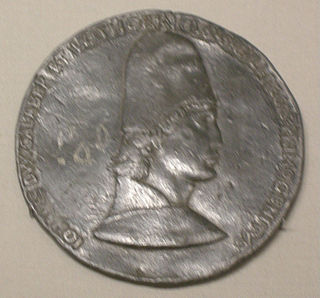
John II of Anjou was Duke of Lorraine from 1453 to his death. He was the son of René of Anjou and Isabella, Duchess of Lorraine.

Louis II was King of Naples from 1389 until 1399, and Duke of Anjou from 1384 until 1417. He was a member of the House of Valois-Anjou.

The King of Jerusalem was the supreme ruler of the Kingdom of Jerusalem, the Crusader state founded by Christian princes in 1099 when the First Crusade took the city.

Frederick, sometimes called Frederick IV or Frederick of Aragon, was the last King of Naples of the Neapolitan branch of the House of Trastámara, ruling from 1496 to 1501. He was the second son of Ferdinand I, younger brother of Alfonso II, and uncle of Ferdinand II, his predecessor.

Charles du Maine (1414–1472) was a French prince of blood and an advisor to Charles VII of France, his brother-in-law, during the Hundred Years' War. He was the third son of Louis II, Duke of Anjou and King of Naples, and Yolande of Aragon.
Duke of Calabria was the traditional title of the heir apparent of the Kingdom of Naples after the accession of Robert of Naples. It was also adopted by the heads of certain Houses that had once claimed the Kingdom of Naples in lieu of the royal title.
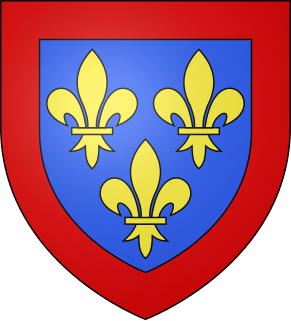
The House of Valois-Anjou was a noble French family, deriving from the royal family, the House of Valois. They were monarchs of Naples, as well as various other territories.

Margaret of Savoy, was a daughter of Amadeus VIII of Savoy and Mary of Burgundy. By her three illustrious marriages, she held a number of titles, including Duchess of Anjou, Duchess of Calabria, Countess of Maine, Countess of the Palatinate, and Countess of Württemberg.
Charles Martel, Duke of Calabria is a name and title shared by two short-lived heirs to the throne of the Kingdom of Naples.

Marie of Blois (1345-1404) was a daughter of Joanna, Duchess of Brittany and Charles, Duke of Brittany. Through marriage to Louis I, Duke of Anjou, she became Duchess of Anjou, Countess of Maine, Duchess of Touraine, titular Queen of Naples and Jerusalem and Countess of Provence.




